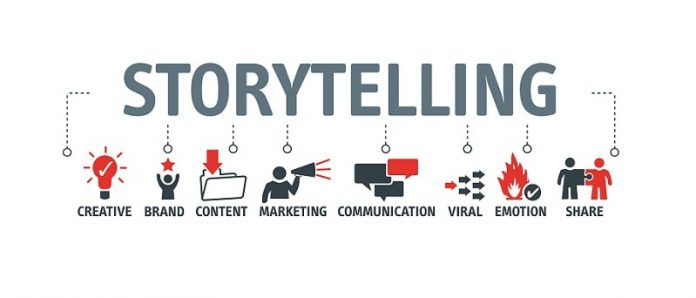By Kate Wolwort
We are surrounded by the content of all kinds. It is everywhere and usually, it is tailor-made for a specific audience with a little help of a particular set of marketing techniques. Of all the content marketing techniques that emerged over the years, there is one holding a notoriety of being something of a two-faced Janus of the marketing industry. I’m talking about storytelling in content marketing.
If you look at the majority of various content marketing guides – you’ll see that thing “you need to tell the story” or “you need to compose a narrative” and so on and so forth. And the examples seem to prove the point. In fact, storytelling is often described as an ultimate one-size-fits-all solution for any marketing campaign.
And for a moment it seems so…
Why storytelling is popular in content marketing?
The reason why storytelling is such a wide-spread technique in content marketing is very simple. People love stories, it is something they can relate to, something that can help them to get through the debris of a certain concept from a more personal viewpoint without annoying condescending tone.
In the context of content marketing, storytelling is something of a neat trick. It is a roundabout way of talking about the product by not talking about the product itself but talking about its impact on customer experiences. Such technique works perfectly with complex concepts as ad tech or big data with machine learning. You don’t need to explain the thing itself but what it does to you.
Storytelling allows to construct an emotional connection with the target audience that can be slightly operated for the benefit of the product. It helps to retain the relevance of the product for a long time without pouring too many resources into it.
All cool, right? However, there is one thing wrong about it.
What’s wrong with storytelling?
The problem with storytelling in content marketing is eerily simple – sometimes storytelling is all there is. Basically, it is “all bark and no bite” content. And sometimes that is not what the target audience is looking for.
A story for the sake of a story can be effective in a certain context. For example, when the product is already established and needs no introduction.
However, if the product is the niche one or just starting to roll in the market – this approach can be detrimental for the product’s prospects. The storytime content can make a splash but it will leave little to no impact. Instead of procuring a longevity of your content it will do the opposite – it will cause a throwaway effect and make it disposable.
Seems bleak, huh? Here’s what you can do about it.
How to fix Content Marketing Storytelling?
The fact of the matter is – the value of the content is determined by its usefulness to the target audience and relevance to its demands. It doesn’t have to “tell a story” as such. Stories can serve to prove the point but there must be a practical element described that will make the story not just a narrative but an example of a working method. A solution that will contribute to the cause.
Long story short – the story must contain the takeaway.
In addition to that, there must be a throughline that will encompass the features of the product through the prism of real-life scenarios. In order to keep the interest high – there must be a progression – every piece of content must fit into the bigger picture and propel the narrative towards the reasonable solutions (with a little help of the product).
That is storytelling in content marketing done right.
Secret of effective Storytelling in Content Marketing
The thing with storytelling in content marketing is that it is working in specific circumstances. While it may seem a bit bizarre, but these circumstances can be manufactured in order to create an environment for further storytelling content.
The simplest example of manufacturing circumstances is putting the product into the broader cultural context and playing on the contrast of the current status quo and so-called “shape of things to come”.
With such background intact, storytelling can be instrumental in establishing the product’s presence in the public consciousness as a valuable and worthwhile asset. This approach can also maintain the target audience’s attention with new case studies.
This can go up to the point when the narrative will become self-sustainable via voluntary target audience participation in promoting the value of the product.
Conclusion
We live in the time when people are more and more selective about what are they spending their time on. After all – time is not a renewable commodity. In order to get the attention of your target audience – one needs to do something extraordinary, something convincing enough that will plaster their eyes on your product.
This is why effective content marketing requires more diverse and unconventional approaches and this is why you should take such techniques as storytelling beyond the realm of the obvious.
Kate Wolwort is a content marketing strategist at The Appsolutions and blogger. She is now working on unorthodox marketing strategy for mobile applications. Want to come up with killer viral article scheme. Kate is a self taught data science enthusiast and crypto fan. Also she enjoys writing about her explorations in the ever changing world of IT-industry.
Storytelling stock image by Trueffelpix/Shutterstock







